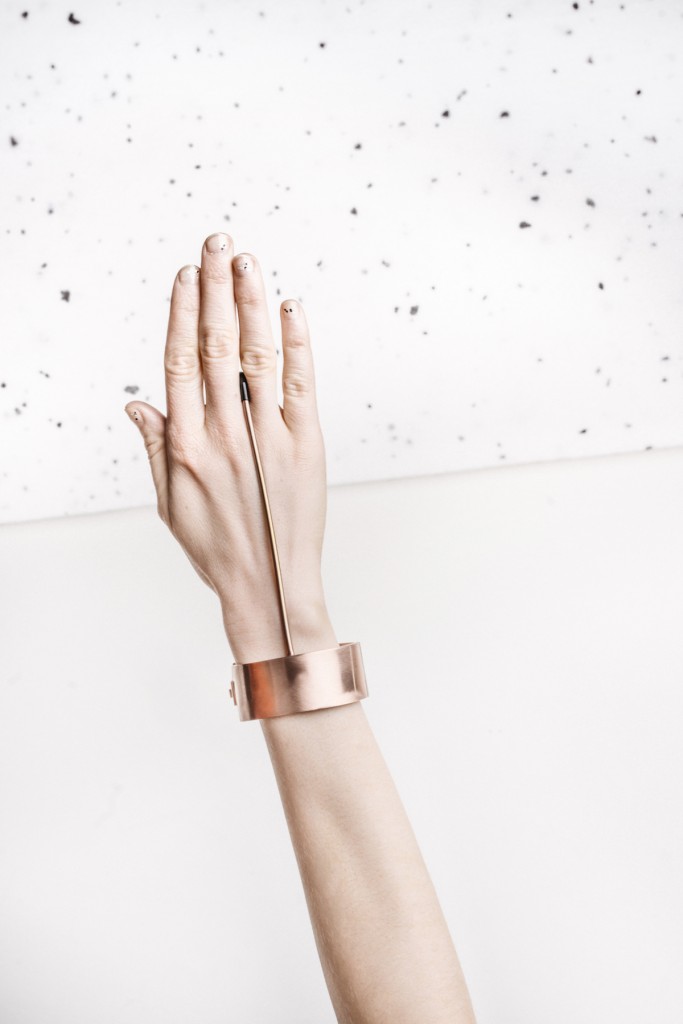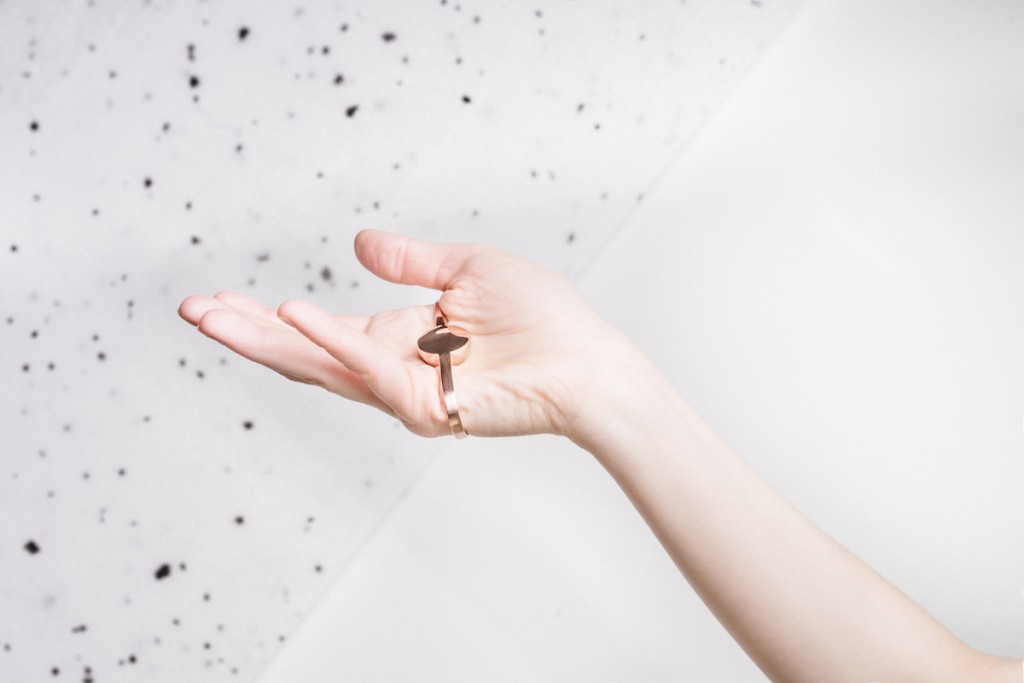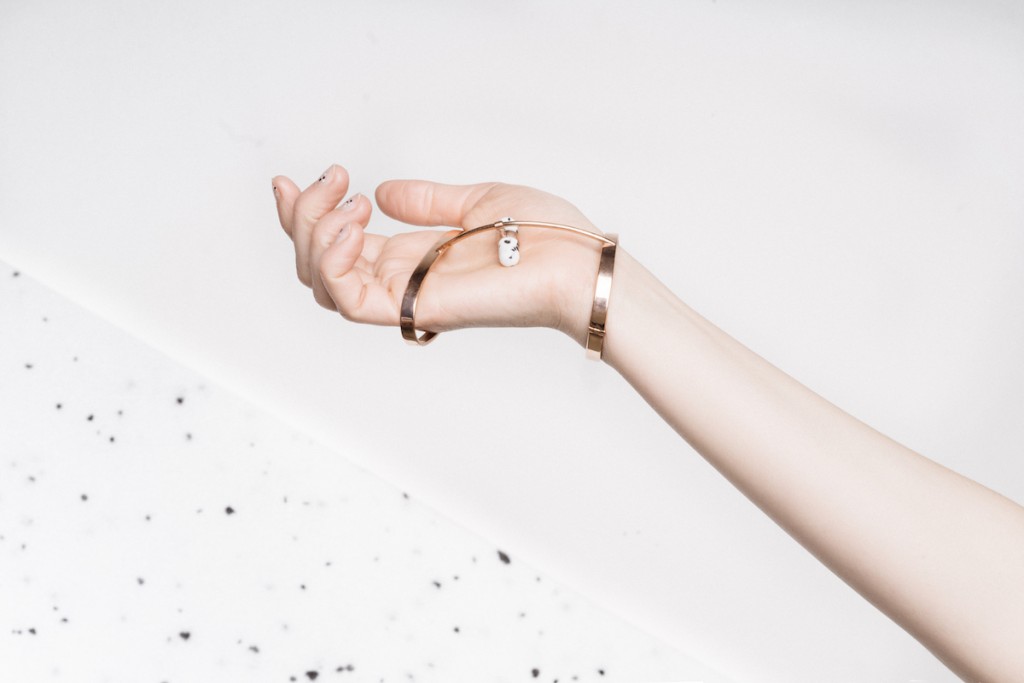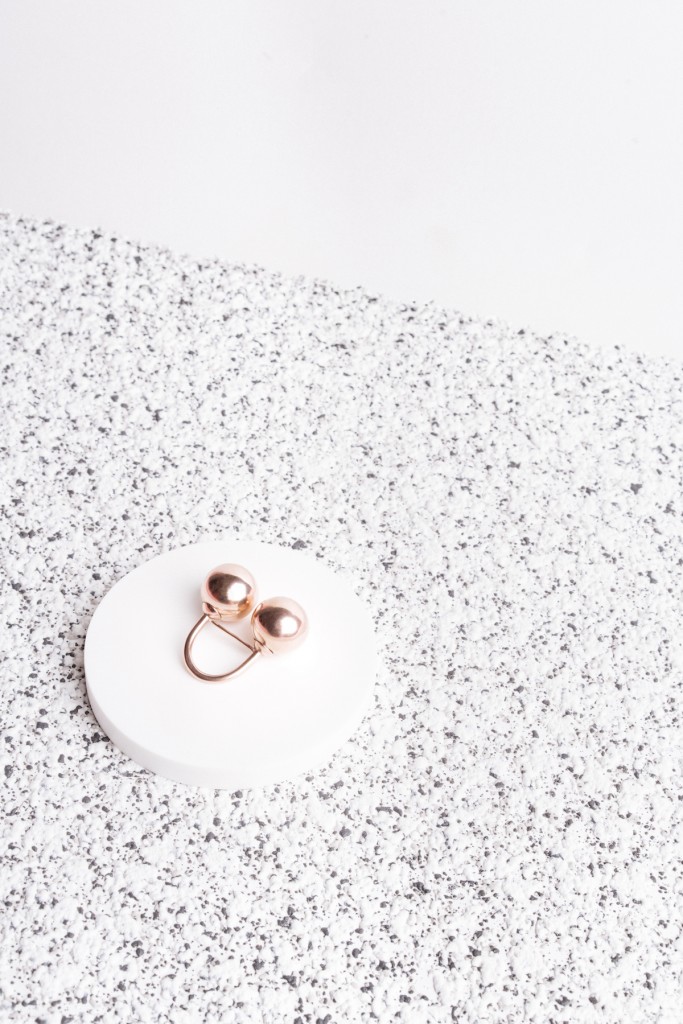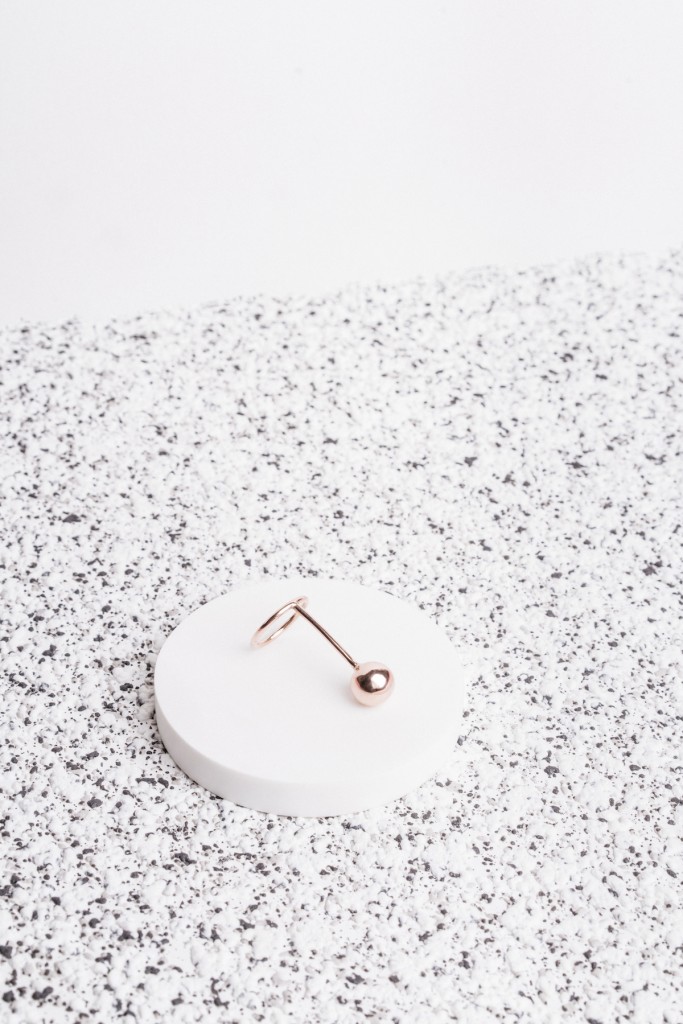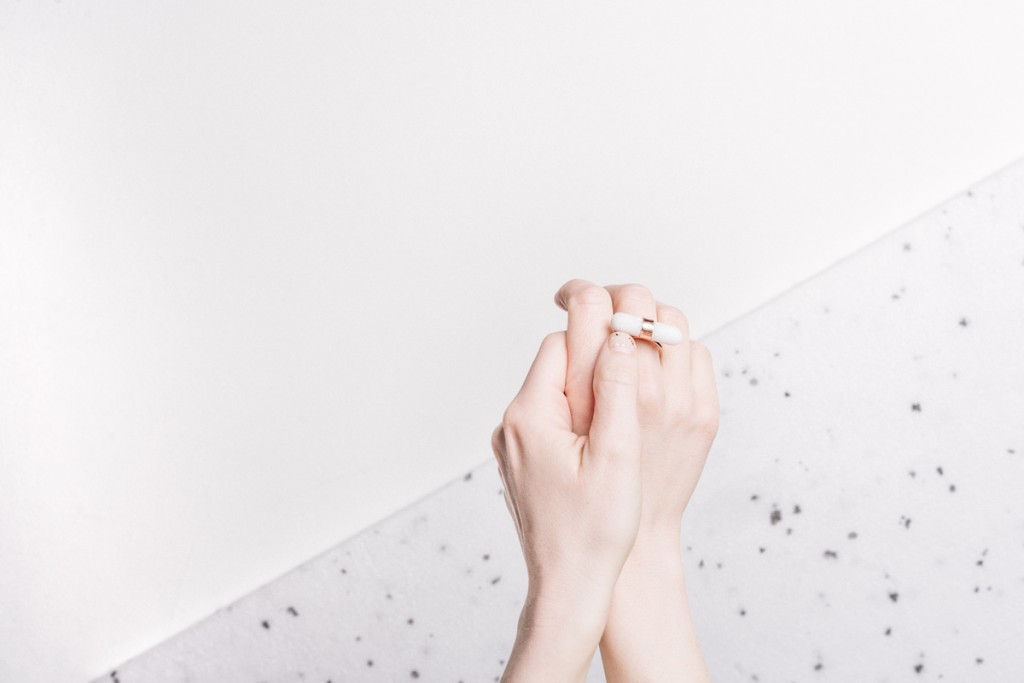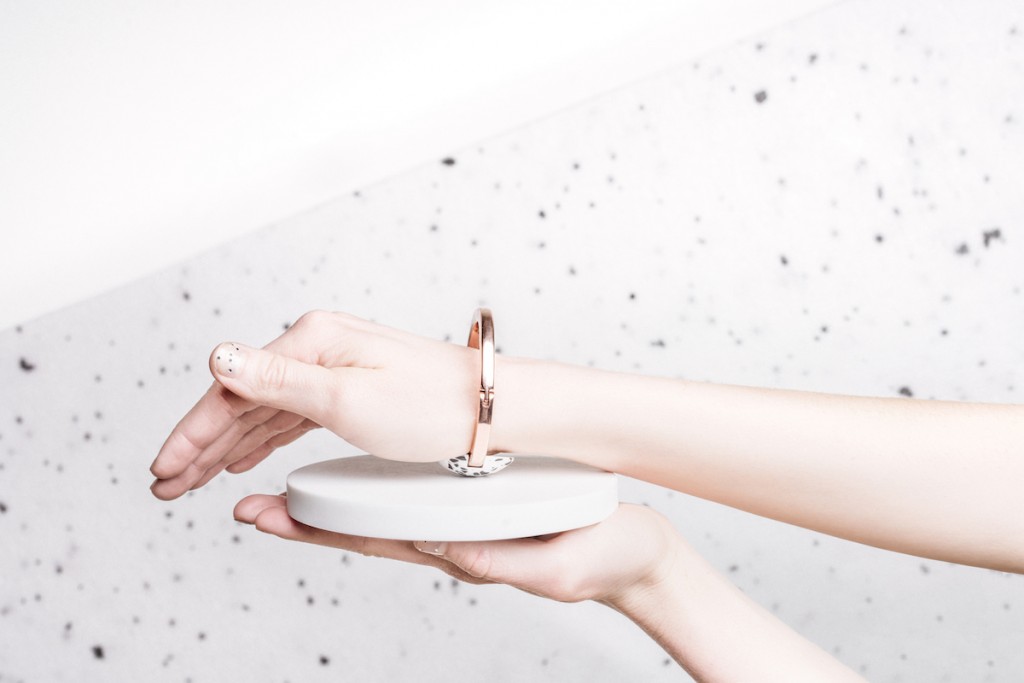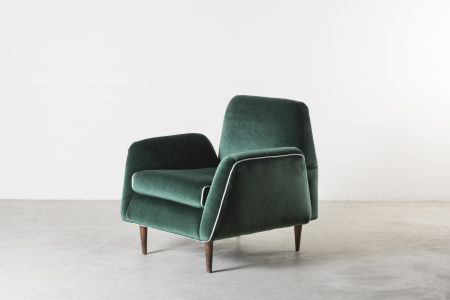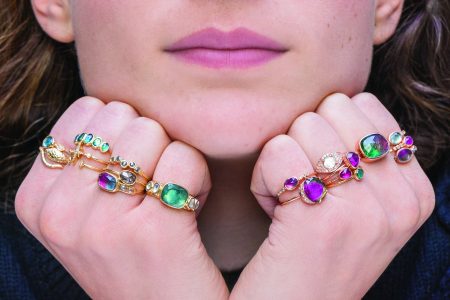Jewellery for Carpal Tunnel Syndrome?
MIKO+, the winner of the Progress Prize at the 2017 Global Grad Show in Dubai, presents an alternative to physical therapy: gilded pink brass jewellery
One of the largest student design shows in the world —the tally for the 2017 edition is 200 participants from 92 universities in 43 countries—, the Global Grad Show at the Dubai Design Week is actually a celebration of the power of small ideas. Curator Brendan McGetrick focused on the hyperfocused: graduates like Isabel Corção Carvalho presented a backpack solution for street photographers wary of crime in Rio de Janeiro, while Marina Baranova of Aalto University came up with a low-pollution version of the sauna stove for Finn fans.
This was also true of the winner of the show’s inagural Progress Prize: with MIKO+, Polish designers Ewa Dulcet and Martyna Świerczyńska created a carpal tunnel syndrome therapy solution for jewellery enthusiasts.
The seven eye-catching pieces are made of gilded pink brass and a mineral acrylic composite, using traditional goldsmith techniques. The items are aesthetically pleasing for a strong reason: they’re meant for the increasing amount of women suffering from wrist diseases —blame it on keyboards and mousepads— who are conflicted about wearing orthopaedic implements such as braces or splints. “Many people feel ashamed to use them, as it points out a state of disability,” explained the School of Form designers. “Despite the medical recommendations people, especially women, are refusing to use orthosis.”
The items were designed in collaboration with a physiotherapist, in order to address with precision the primal concerns of the most common wrist disorders. As such, the MIKO+ set serves as an instrument of both treatment and prevention of mechanical injuries and neuropathies —the parts are designed to pressure specific points in the palms and to massage congested had muscle structures. “MIKO+ transfers objects from the medical to the lifestyle field: because of that, patients can no longer feel ashamed, as jewellery has no associations with pain nor disability,” said Dulcet and Świerczyńska.
The project was selected by a jury that included M+ museum curator Aric Chen, The Financial Times’ Edwin Heathcoate and Nike’s Noah Murphy-Reinhertz. “Whether by transforming old bikes into electric ones, creating children’s clothing that grows with them or treating the afflictions of too much computer use with timeless analog jewellery, these designers are shaping my kind of future: one that is more fun than today and also more sustainable,” stated Murphy-Reinhertz.
